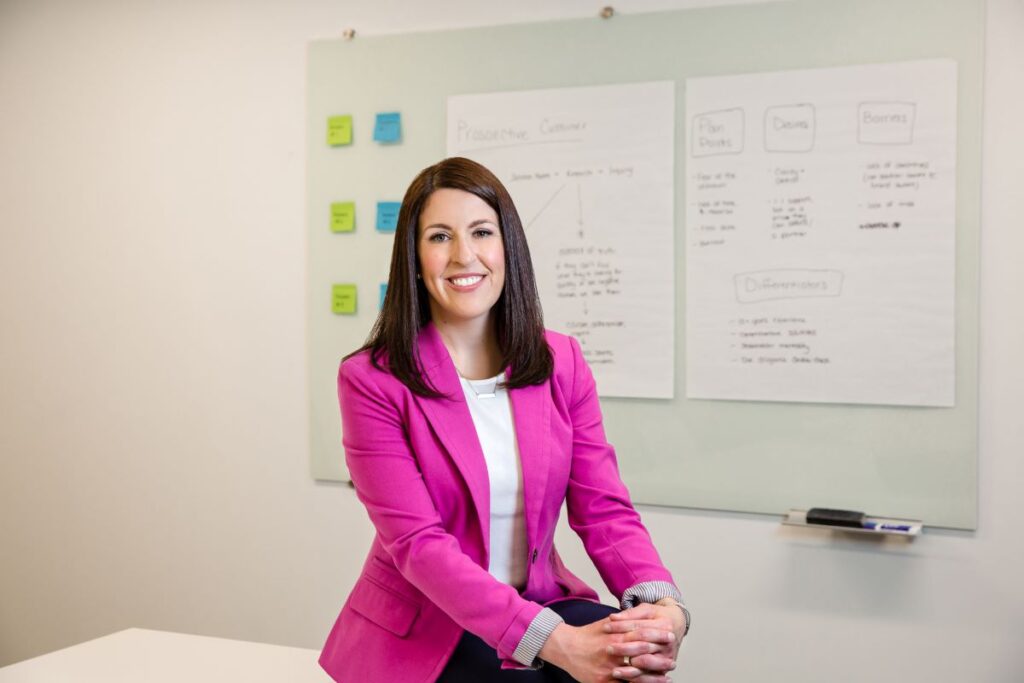The Secret to Scaling Your Business
We have arrived at the final and missing piece of our scaling series. Over the past month, the theme of scale has become progressively more discreet, from its implications in society, to organizations, to individuals.
Our starting point exhibited scale’s worst implications: what happens when it’s destructive?
Then, we narrowed a bit, asking: how can we course-correct a society, an organization, or relationships that have gone astray because of scale’s ability to dehumanize?
And also inquired, how? “How does one have a difficult conversation that will reveal common ground with another?”
Finally last week, we took the in-depth conversation one step further with an underused prop: the telephone. You may have left last week wondering, “What could this possibly have to do with scale? Picking up the phone is the opposite of reaching a large group of people.”
Or is it?

Today, I want to introduce you to an idea that contradicts our perception of scale. Picture that one to one phone call. Nothing could get more singular than that, right?
But what’s the after-effect of your phone call? The point of a difficult conversation is to move forward to a new, evolved state. Applying the results of those individual conversations – that’s where your scale begins.
Although I’ve strongly hinted at it, I’ll say it here definitively: I am building a company. Of course, I’ll share more very soon. But I bring it up now, as I want to reveal my number one concern to you.
While most people launching something new are concerned about clients and revenue, I’m not. Don’t get me wrong: I’m busting my behind to get those in place. But let me tell you the #1 thing on my mind for this service-based business:
How do you scale… with meaning?
This was the question keeping me up at night for months. I had been throwing around some ideas, testing out their feasibility, and feeling a little despairing about what a scaled business and life in my line of service could look like (because I can tell you right now: it does not look like overpriced online videos and Facebook mastermind groups).
And then this interview with Airbnb’s CEO Brian Chesky gave me the answer – not the “what” of the answer but its “how.” I’ve listened to this conversation six times, and each time I get a little more from it. It’s brought me personal peace and confirmed that we’re on the right track…
Here’s the secret, summarized by co-founder of LinkedIn and partner at Greylock VC Reid Hoffman:
The only way an organization can truly scale, is to first do things that don’t scale at all.
You don’t start with a 100M users. You start with a few. So stop thinking big, and start thinking small.
Hand serve your customers. Win them over, one by one.
You should absolutely listen to this 30 minute episode. You’ll love it if you like listening to smart (yet approachable) CEOs, if your job entails delivering exceptional service, or if you’re curious about Airbnb – a company now worth $30b.
In the interview, Chesky recounts the early days of Airbnb. Customer “traction” wasn’t vocabulary they were really considering, as user numbers were so low. Chesky and his co-founder lived in California, and they had just a handful of users… on the other side of the country in New York. So at the urging of their business adviser, they traveled to New York to meet and understand their users, one by one, while the numbers were still small enough so that they could.
During that trip they knocked on Airbnb hosts’ doors and slept on their couches. There was nothing “CEO” or scaled about it. They had one-on-one conversations to get inside the hearts and minds of hosts, uncovering what they liked, didn’t like, and feared.
Then, on a cold, snowy NYC night, one of these face-to-face conversations led to magic. A passionate host pulled out a binder of notes he’d been keeping on his experience of being a host – literally, a binder.
Why do I call it magic? It became the actual product road map that Airbnb used. Think about it: one of your customers is so passionate – so engaged in your company – that he hands you answers to 80% of your product questions – for free. All you had to do was have a curious, face-to-face conversation. (Not always easy but) simple, right?
Here’s the other part of the interview that struck me with intensity. Fast forward from those early days to a bigger time for Airbnb; it had picked up momentum and had traction among millions. But that wasn’t enough. With kuddos to Brian, he made sure they were still focused on handcrafting an individual’s personal experience. So, the team found their ideal customers and probed for the following:
“What would a 1, 2… 5… 9, 10, 11 star Airbnb check-in experience be?” A one star looked like: the host doesn’t answer the door when a customer shows up. And on the other hand, 11 looked like: a rocket ship shows up at your door and takes you to outer space. Although an 11 sounds out of this world (get it?), Chesky says that’s not the place to get hung up. He explains,
The point of the process is that maybe 9, 10, 11 aren’t feasible. But if you go through the exercise of ‘keep going,’ there’s some sweet spot between ‘I showed up, and they opened the door – and I went to space.’ That’s the sweet spot. And you have to almost design the extreme to come backwards. Suddenly, doesn’t just knowing [the customer’s] preferences seem reasonable?… This is the kind of stuff that creates great experiences.
For me and my business, this means: select the right clients. Not the highest paying clients. Not the largest number of clients. The right clients. Make every interaction with them count. Ask for feedback and be willing to accept feedback (two very different things). Talk to people, one-on-one, to dream up (im)possible experiences that will delight. Discern the sweet spot, which will make them want to tell all their friends and family about our work together. Then in time, when the right clients and experiences are in place, scale that. But not before.
This seemingly simple approach is the secret to scaling. Like Reid Hoffman says,
Stop thinking big, and start thinking small. Hand serve your customers… One by one.


